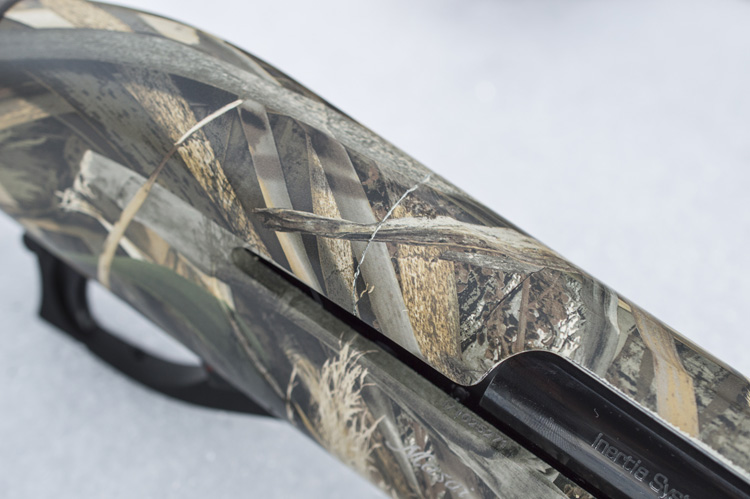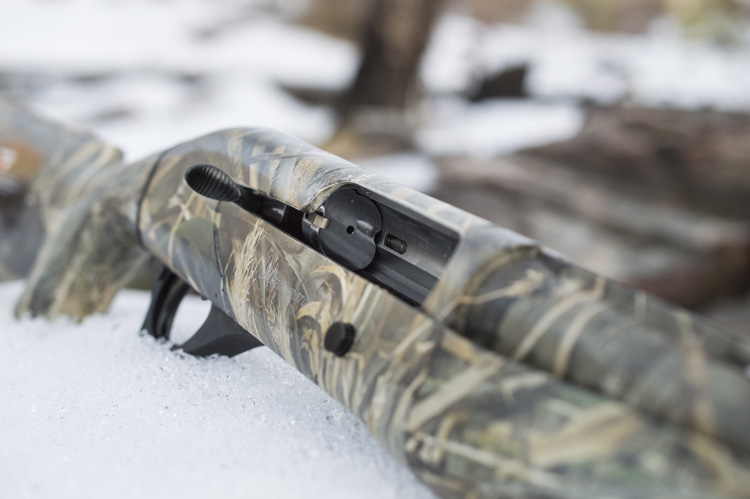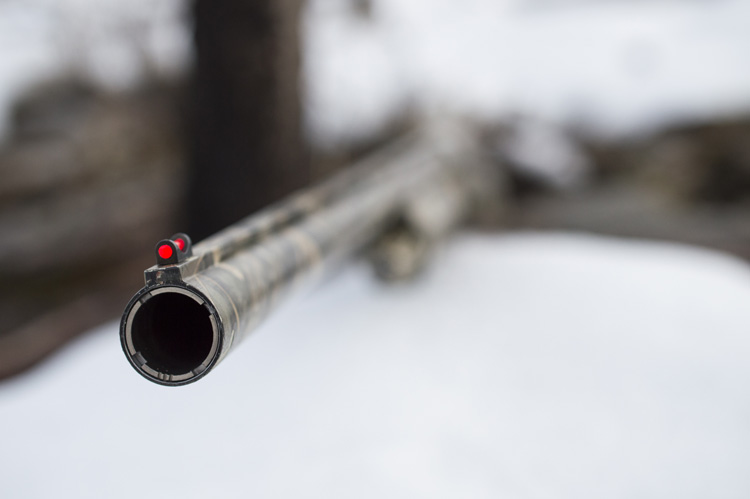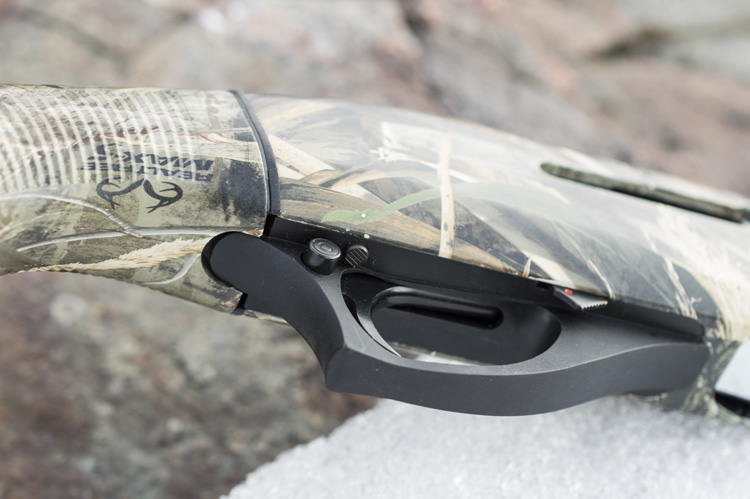
When I first got into shooting in a big way, it was with a shotgun in my hands… not because I was initially attracted to shotguns in any remarkable way, but rather out of simple convenience: as a young(er) guy living in a suburb of Vancouver, the nearest rifle range was at least an hour away, while the local trap club was literally just down the road. So, while I initially loved shooting rifles first and foremost, I found myself spending more and more time behind a smoothbore because it was easier trigger time to get. Got an hour free on Sunday morning? Sounds like a great time to shoot some clay. An unexpected Wednesday afternoon off? Yeah, I could shoot for an hour or two. Of course, like so many other clayshooters, those hour or two sessions turned into dawn-to-dusk days. Thousands of Winchester AA hulls were processed across my reloading bench every week as I strove to claim a perfect score on the sporting clays course. And eventually, I ended up getting hooked on Olympic Trap; the same form of trap that is (not shockingly) shot in Olympic competition.
The only downside to shooting Olympic Trap is the cost. If you peruse the shotgun rack at any serious Olympic Trap tournament, you’ll see more shotguns with five-figure price tags than without. If you aren’t shooting a Perazzi or a Beretta DT, someone will ask you why you’re not; they’re that common. Which leads to some serious gun snobbery.

And at the time, many of the cheapest shotguns in Canada were coming from Turkey. One thing you learn very fast when you’re shooting 700 or a thousand rounds in a given week is what is, and is not, reliable. And pretty much everything Turkey made back then was definitely not. Some still aren’t.
Since then, it’s become apparent that many Turkish shotgun manufacturers have learned, evolved, and in some cases even innovated and the products that result are quite good. The Retay Masai Mara is one such gun.

In an inertia-driven gun, a multi-lug rotating bolt is pinned to the carrier and operates on a cam in the bolt carrier, and rotates into locking lugs on the barrel as the bolt is closed to bring the action into battery. Behind the bolt, between the bolt and its carrier, is what’s known as an inertia spring.

The benefit is, as mentioned, twofold: cleanliness and light recoil. The former is a result of the gun not using any of the combustion gases to operate. These guns stay extremely clean and are easier to clean due to their simplicity. Usually all you need to do is wipe off the bolt head and swab the barrel. The latter is a result of some of the recoil energy being absorbed by the inertia spring, and the sort of spring-assisted equilibrium that inertia-operated guns work off of.

So, on to the issue I’d taken with most Turkish shotguns in the past: the quality. Honestly, it’s good. Is it as good as a Benelli? No, but Benellis are probably among the best finished semi-auto shotguns on the market, and the Retay is between $700 and $1200 cheaper than the Super Black Eagles it approximates. So no, you won’t find the same exquisite finishes, and superlative machining you’d find with one of those more expensive guns. But it’s well beyond what we’d call serviceable.

Now the quality of the removable trigger assembly, on the other hand, is above reproach. The shell lifted is nicely shaped to avoid eating your thumb during loading, and the quality of the trigger components is excellent. Retay was smart and ensured everything is properly retained, so you can’t accidentally release a lever and watch a spring sail across the room, and all the various pins holding it all together are either staked in place or held in place with locks. And all the components are very well finished. Honestly, the quality of the stampings and machined parts exceeds that which we’ve come to expect from American shotguns, and it’s absolutely bereft of plastic parts. Even the trigger guard is aluminum, which is something that we wish wasn’t so noteworthy these days!
The barrel features a removable ejector, in case you ever beat the original one into submission, and has a single fiber optic front bead on a low vented rib. The gun comes with a full complement of five chokes. In fact, it’s actually worth mentioning that the Retay Masai Mara actually comes in one of the nicest packages we’ve ever seen, coming in a locking case (with very interesting internal metal hinges), with chokes, choke tool, sling swivels, a reasonably sized bottle of oil, stock adjustment inserts, a snap cap and plenty of excellent documentation. The owner’s manual is 128 pages long and includes both detailed take down instructions and exploded diagrams with parts labelled and numbered.

Given how well everything is assembled, the Retay Masai Mara did exactly what you’d expect afield; it approximated the performance of a Benelli in darn near every way. It weighs about the same, it handles about the same, and as far as I can tell it throws pretty much the same patterns. Honestly, if you were dumb enough to carry a gun with your eyes closed, you’d be totally capable of thinking your Retay was a Benelli. If anything, the one difference seemed to be that the Retay Masai Mara shot even softer than the last Benelli I shot… but that’s always a hard phenomenon to measure unless you’re doing it back to back. In any case, the Mara is a seriously soft shooter.

Retay claims the Masai Mara is impervious to this. They’re wrong. In about -7, with a lot of wind, and shooting the gun nearly vertical, the combination of gravity and cold, thick gun oil did cause it to click a couple times. Switching oils prevented any additional issues, but it’s something owners should be aware of. Oh, and you’ll want to run these relatively wet; don’t give that bolt any reason to stick instead of slide.
Otherwise, we didn’t have any issues with the gun. The safety is a bit smaller than most modern guns, and with gloves it can be a bit finicky, but that feels like a thoroughly “first world problem.” It loads easily, shoots reliably, and will probably only get better with some wear and break-in.
Overall, with an MSRP of $1200, the Retay Masai Mara is a great way for someone on a budget to get into an inertia-driven gun. They’re quite a treat to shoot, and with the combination of the gun being such a practical package for the price, and the excellent way it’s presented with the locking case, chokes, accessories and documentation it seems like an excellent gun for someone that’s newer to the market. There’s a lot of value in all those various bits and pieces, and when it’s all put together it really does provide a turn-key, field-ready package for hundreds less than its nearest competitor.